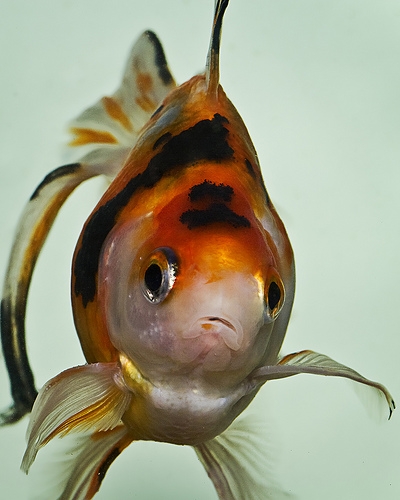
How to Tell If Your Fish Is Pregnant. A pregnant fish may not be as easy to spot as you may think. While most livebearing fish show the telltale bulging belly, in some fish it may not be as obvious. In addition, you will need to watch for other signs that can help you determine if your fish is pregnant or about to give birth. Livebearers, such as mollies, platys, guppies and swordtails, do become pregnant and give birth to live fry, but the majority of fish spawn eggs.
Determine what breed of fish you own. Some fish, such as balloon mollies, may have a natural bulge in the belly region just below the gills. If they do possess this feature, it may make it more difficult to determine whether your fish is pregnant. Mollies, platys, guppies and swordtails are common fish that give birth to live fish called fry. Male fish are typically more ornate than females. Male livebearing fish tend to have more elaborate colors and can be characterized by a narrow, longer anal fin. Female fish tend to have more drab colors and the anal fin is more triangular and fan-shaped.
Watch your fish for several days to determine if the bulge in the belly is getting any bigger. Fish are typically pregnant for 20 to 40 days, depending on the breed. Over the course of several days, you may be able to see the bulge get larger. In addition, some live bearing female fish develop a bright red spot on their bellies. A non-pregnant female may also have a spot in the same location, but it is typically much darker.
Keep a close eye on your fish. In particular, look for slow movement, lack of appetite, or odd behavior in your fish such as hiding in the aquarium. This is a telltale sign that the fish is close to giving birth. However, this may also be a sign of illness, so be sure to keep a close eye on the fish's behavior.
Move your fish to a separate aquarium or a breeding box, or separate them inside the current tank from the other fish. In particular, if your fish becomes extremely lethargic and hasn't eaten for several hours, she may be ready to give birth. You will need to move the fry to a separate aquarium to protect them from other fish within the larger tank.
Wait for the fish to give birth, and keep the mother separated from the fish in her normal aquarium for about 12 to 24 hours, giving her ample time to rest. In addition, you should keep the young fish in the separate aquarium for two to three weeks until they are large enough to go into the larger tank.
 What Are the Causes of Ick in Fish?
What Are the Causes of Ick in Fish?
Wh
What Are the Causes of Ick in Fish?
What Are the Causes of Ick in Fish?
Wh
 Aquarium Heaters
Anyone looking to set up an
Aquarium Heaters
Anyone looking to set up an
 How to Choose Fish for Mini Aquariums
How to Choose Fish for Mini Aquariums
How to Choose Fish for Mini Aquariums
How to Choose Fish for Mini Aquariums
 List of Aggressive Tropical Freshwater Fish
List of Aggressive Tropical Freshwater Fish
List of Aggressive Tropical Freshwater Fish
List of Aggressive Tropical Freshwater Fish
 What to Do About Bully Fish in an Aquarium?
What to Do About Bully Fish in an Aquarium?
What to Do About Bully Fish in an Aquarium?
What to Do About Bully Fish in an Aquarium?
Copyright © 2005-2016 Pet Information All Rights Reserved
Contact us: www162date@outlook.com